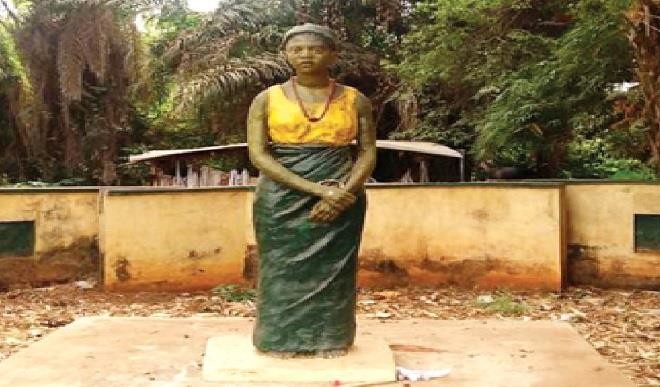The stirring story of Omodoko
If you are in Idah you may ask to be taken to see the statue of Omodoko. It is a popular spot and any ‘Okada’ rider will soon get you there. The statue is located within a fenced structure by the Inachalo river, and the countless women present are busy washing clothes oblivious of the […]


If you are in Idah you may ask to be taken to see the statue of Omodoko. It is a popular spot and any ‘Okada’ rider will soon get you there. The statue is located within a fenced structure by the Inachalo river, and the countless women present are busy washing clothes oblivious of the journalist who is busy taking pictures. It is a valley-like setting and almost seems to beckon at the visitor. There are tall green trees in the neighbourhood which have a cooling effect on the environment, and it is a good spot to visit on a Saturday morning if you wish to see some of the historical and cultural sites which tell of rich moments in Igala history.
In local traditions, there are various accounts of women who made the ultimate sacrifice in order to save the kingdom from external enemies. The female can then be seen as the preserver and protector of the race, and as one who guarantees cultural continuity and harmony. In the historical accounts of most societies it is the female who is buried alive as a sacrifice in order to save and defend the land. This occurs much more among women than among the men who are quite valiant too, but in their traditional roles as warriors. Princess Inikpi is one who seems to have been buried alive during the Igala-Benin war.
Another is Princess Omodoko who was also buried alive, alongside some slaves at about the time of the Igala-Jukun war. On the story of Omodoko, Tom Miachi in The Incarnate Being Phenomenon in African Culture, commenting on the paucity of information on the subject, says “There is not much that is known and told about Oma Odoko in Igala oral history. None of the foreign authors mentions anything about her in any history and ethnographic literature either.”
He explains ‘There is an Oma Odoko shrine at the bank of the Inachalo river to the east of Idah, which has a keeper that looks after it. A statue has even been erected near her shrine to commemorate the Princess and appreciate her place and role in Igala history. A powerful group named after her, the Oma Odoko Women Association, formed in the mid-1980s, exists in Idah and is growing as a strong socio-cultural and thrift organization.”
Both Inikpi and Omodoko are significant not only to the Igala, but also to those whose coming made the two princesses’ at different times to make the ultimate sacrifice in order to defend the land. Emmanuel Onucheyo in Culture for National Integration, writes on a visit by the Igala diaspora and related groups to Idah “The Bini lady was eager to see Inikpi’s statue while the Jukun were eager to see Omodoko’s for obvious historical reasons.” There are popular accounts which point to the poisoning of the Inachalo river,at about the time of Omodoko’s sacrifice.
Miachi states “The Inachalo river was poisoned by Igala or Igala aided medicine men, leading to untold death of the invading Jukun forces.” Other sources indicate that Hausa mallams from Bebeji in present day Kano state, came to the help of the Igala and poisoned the Inachalo river, leading to many casualties among the Jukun. This, as an Igala son once told me, sounds like an early attempt at ‘chemical warfare’ within what later became known as the Nigerian region. It is said that in spite of a person’s excellent culinary skills, fish taken from the Inachalo river never get done when cooked.
